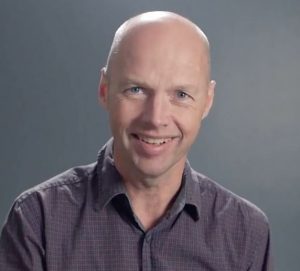Education is the biggest asset, but not everyone is able to get it due to many reasons like lack of money or resources. But to solve this problem, Sebastian Thrun, the famous educator, inventor, computer scientist and entrepreneur, took the initiative and founded Udacity. Many people might not be aware of this educational platform, but there are millions of people who actually have taken its advantage and have educated themselves. This online platform is providing academic as well as vocational educational courses to a global user base to help them get the best suitable job for them.
Early Life
Sebastian Thrun was born on 14 May 1967 in Solingen, West Germany to Winfried and Kristin Thrun. He completed a diploma in Computer Science, Economics and Medicine from the University of Hildesheim in 1988. In 1995, he received a PhD degree from the University of Bonn.
Thrun was always interested in robotics and automotive technologies. In 1994, he started working on the Rhino project under the guidance of his doctoral thesis advisor Armin B. Cremers.
Career
After completing his education, Thrun started working at the Carnegie Mellon University (CMU) as a research computer scientist. It was Thrun, who built the world’s first robotic tour guide along with his fellows at CMU, Wolfram Burgard and Dieter Fox, for the Deutsches Museum Bonn, in 1997. Another robot that he built was implanted at the Smithsonian’s National Museum of American History in Washington, DC, for a period of two weeks that guided over ten thousands of tourists.

In 1998, he was appointed as the assistant professor at the Robot Learning Laboratory of the university. Later, he co-founded a Master’s Program in Automated Learning and Discovery, along with the other faculty members. The course later became a PhD program for the students of CMU. At CMU he also built a humanoid interactive CMU/Pitt Nursebot and developed my mapping robots.
In 2003, he left CMU to join the Standford University as the associate professor and in 2004, he was promoted as the director of SAIL (Stanford Artificial Intelligence Laboratory). In 2005, he started working on a new robot Stanley and made an entry in the DARPA Grand Challange. His robot won the first price.
In 2007, he again participated in the DARPA Urban Challenge with his robot “Junior” and won the second prize. Later in the same year, Thrun along with many Standford University students joined Google as sabbatical and co-developed the Google Street View.
After working for a period of seven years at Standford, in 2011, Thrun left the job to join Google as a Google fellow. He then attained the post of VP at Google and worked at on development of the Google driverless car system. At Google, he also founded Google X, where he founded Google Glass. In late 2011, he was introduced to Artificial Intelligence at Google, which was the biggest influence for him to start Udacity.
Founding Udacity
In January 2012, Thrun founded Udacity with David Stavens and Mike Sokolsky, a MOOC website, where he would teach people about everything. He sent e-mails to his students and to the people who were known to him about the website and asked them to enrol for the courses. For his surprise, he received 160000 enrollments for a class on Introduction to Artificial Intelligence, and more people joined from out of Standford. There were students who had never been to college, few were single moms and even students from war zone areas like Afghanistan joined the class. The platform was free, and Thrun was offering the same education to people that a Standford University student was getting by paying $58000 per year.
The company received its first investment from the venture capital firm, Charles River Ventures, and Thrun put his personal money worth $200,000 into it. In October 2012, Andreessen Horowitz invested $15 million in Udacity. By 2014, the company was teaching 12 full courses and 26 free courseware to 1.6 million global users.
Udacity basically partners with Universities and MNCs, to prepare courses that can help the students prepare for the competition and get the right job. The platform provides proper grades and certifications to the students on the basis of their performance in the tests.
In 2005, Thrun was named among the ‘Brilliant 5 by Popular Science’. He has been also awarded the Max-Planck-Research Award (2011), the Inaugural AAAI Ed Feigenbaum Prize (2011), Global Thinker number 4 by Foreign Policy (2012), ALVA Award by 99U (2013), and number 17 Influential Educator, by Noodle (2014), etc.
He has also co-authored a book named ‘Probabilistic Robotics’ along with his long-term co-workers Dieter Fox and Wolfram Burgard, which is a best seller in the Japanese market.

Yashica is a Software Engineer turned Content Writer, who loves to write on social causes and expertise in writing technical stuff. She loves to watch movies and explore new places. She believes that you need to live once before you die. So experimenting with her life and career choices, she is trying to live her life to the fullest.
